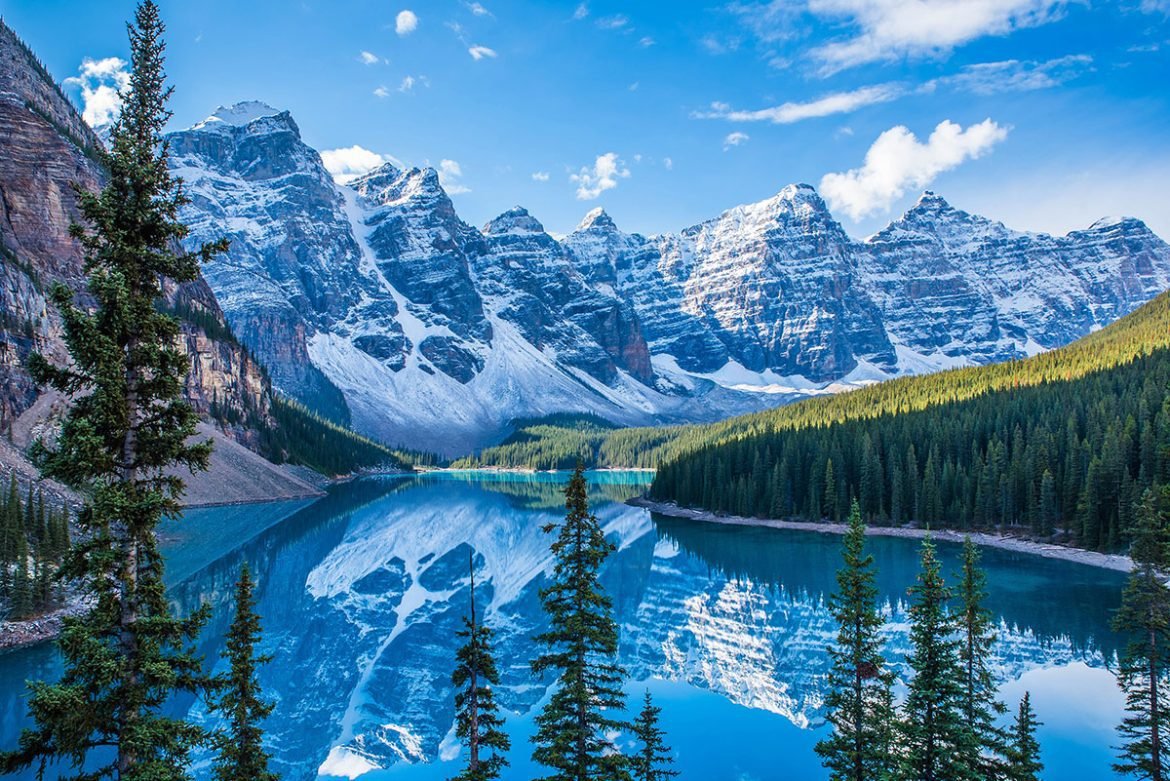There is a wide variety of attractions in Canada for tourists to enjoy, from beautiful island landscapes to breathtaking alpine waterfalls. The North Coast Indians of British Columbia and the French explorers of Quebec all contributed to the rich history of this former French and British colony that stretches from the Atlantic to the Pacific. Visiting Canada is like visiting two nations in one because of the existence of two official languages: French and English. Nature lovers and city slickers alike will find a lot to love in Canada. A rundown of the best sights to see in Canada:
10. Gros Morne National Park
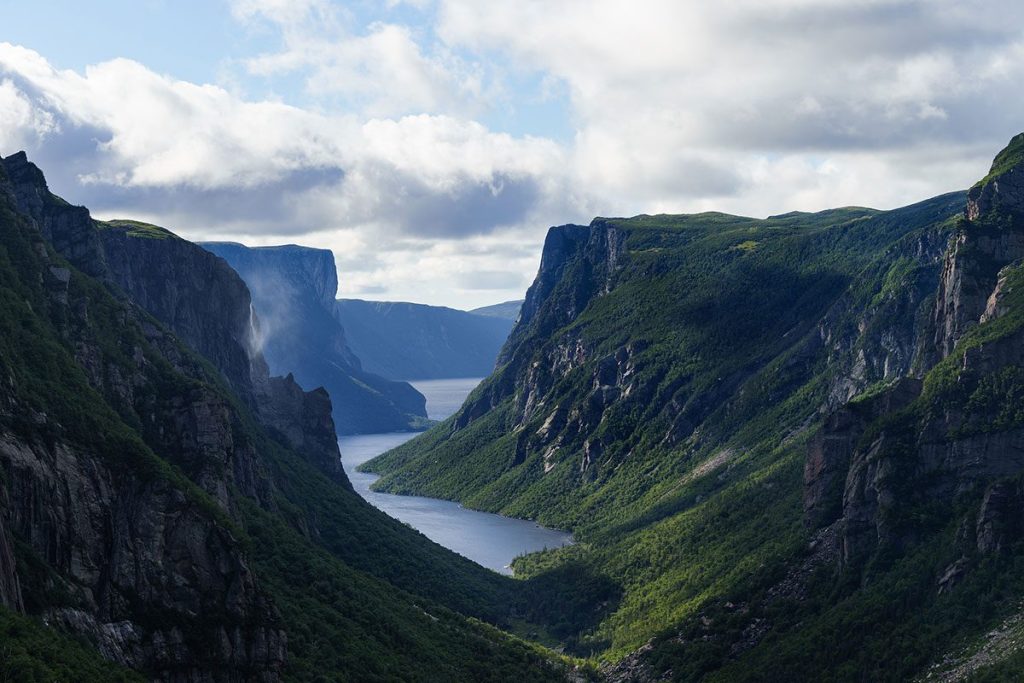
A scenic view of Western Brook Pond in Newfoundland, Canada. Image source: Curtis Watson/Shutterstock.com
In terms of geology, the ancient rocks discovered in Newfoundland’s Gros Morne National Park are crucial to the global community’s ability to comprehend the formation of the world’s seas and continents. The park has an alpine environment with the Long Range Mountains and lowlands along the Gulf of St. Lawrence.
Black bears, moose, and deer are widespread, and visitors will witness everything from small songbirds to enormous whales. The peak tourist season is the brief summer months. During the peak winter season, however, the park sees an additional surge in snowmobile and cross-country skiing visitors from February through April.
9. Calgary Stampede
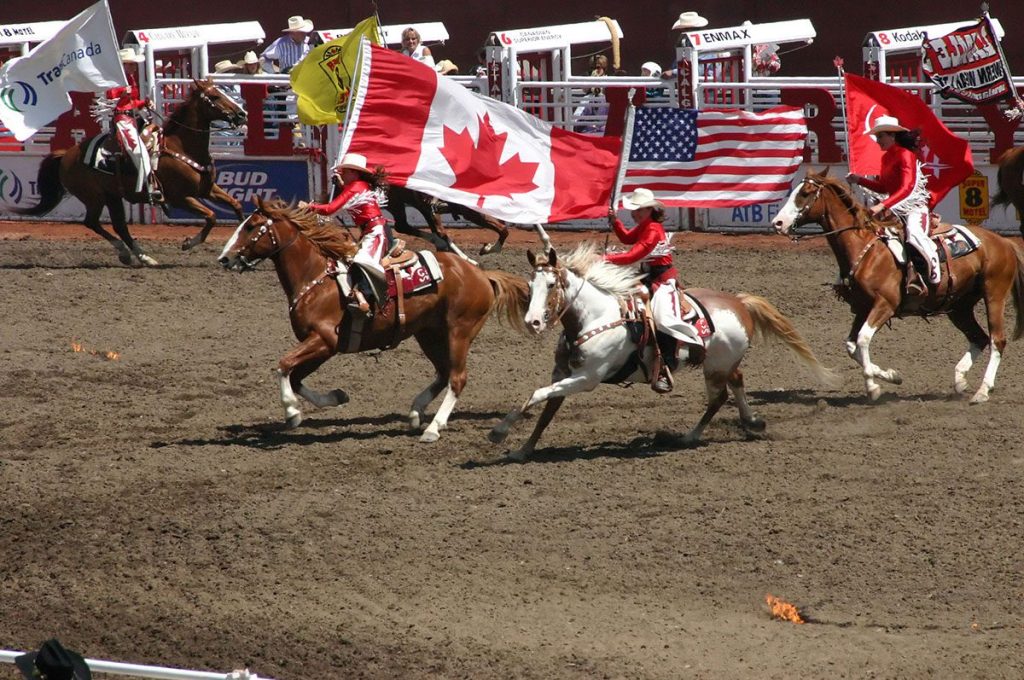
participants make their way through the streets of Calgary, Alberta during the annual Stampede Parade. Image source: steve estvanik/Shutterstock.com
One of the largest rodeos in the world, the Calgary Stampede, has its roots in the wild west performances that traveled the country in the late 1800s and early 1900s. With its steady growth, the Stampede now features competitions amongst the world’s greatest cowboys for a total of $2 million in prize money.
In addition to being the greatest in the west, this Canadian city also organizes live concerts, a carnival, and a ton of delicious cuisine and exciting dance parties. What Calgary calls “the biggest outdoor entertainment on earth” begins with a procession that covers 4 kilometers (2.5 miles). Every year in July, a 10-day festival is held.
8. Victoria’s Inner Harbour
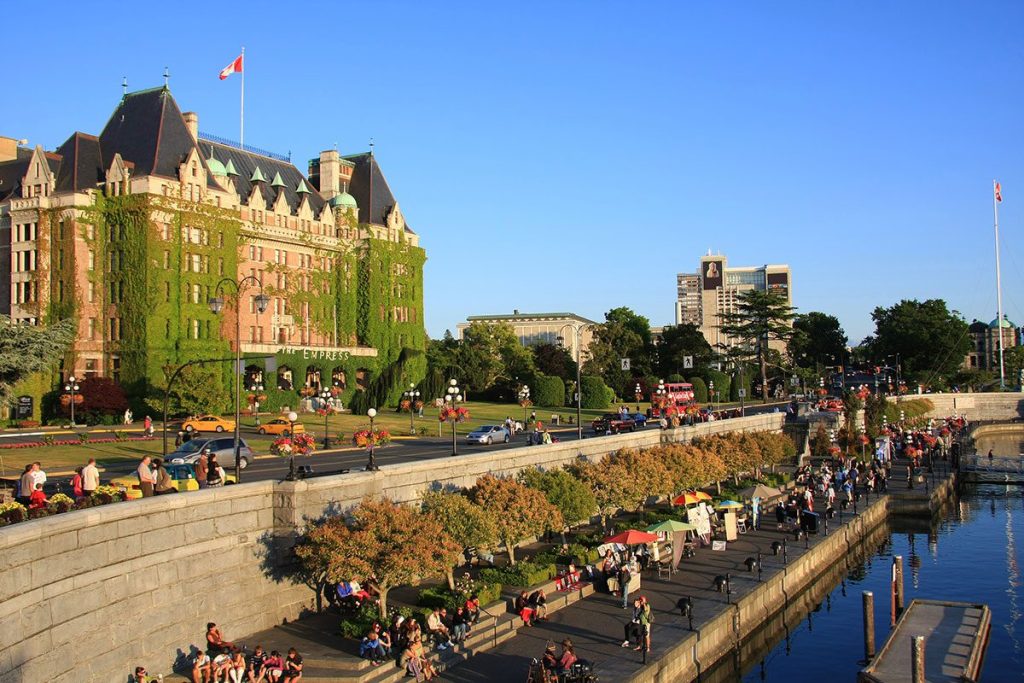
A stunning aerial view of Victoria’s Inner Harbour on Vancouver Island, Canada. Image source: Hannamariah/Shutterstock.com
The Inner Harbour of Victoria, on the island of Vancouver, is a fantastic tourist destination. Victoria, the capital of British Columbia, is a beautiful city with a waterfront and imposing government buildings. On Labor Day in September, the port in this city is filled with traditional wooden boats for a celebration.
Kayaks and tour boats are available for guests to use while exploring the port. Stop by the Empress Hotel, a Victoria icon since the early 1900s and located just across from the harbor, for a typical British afternoon tea.
7. Bay of Fundy
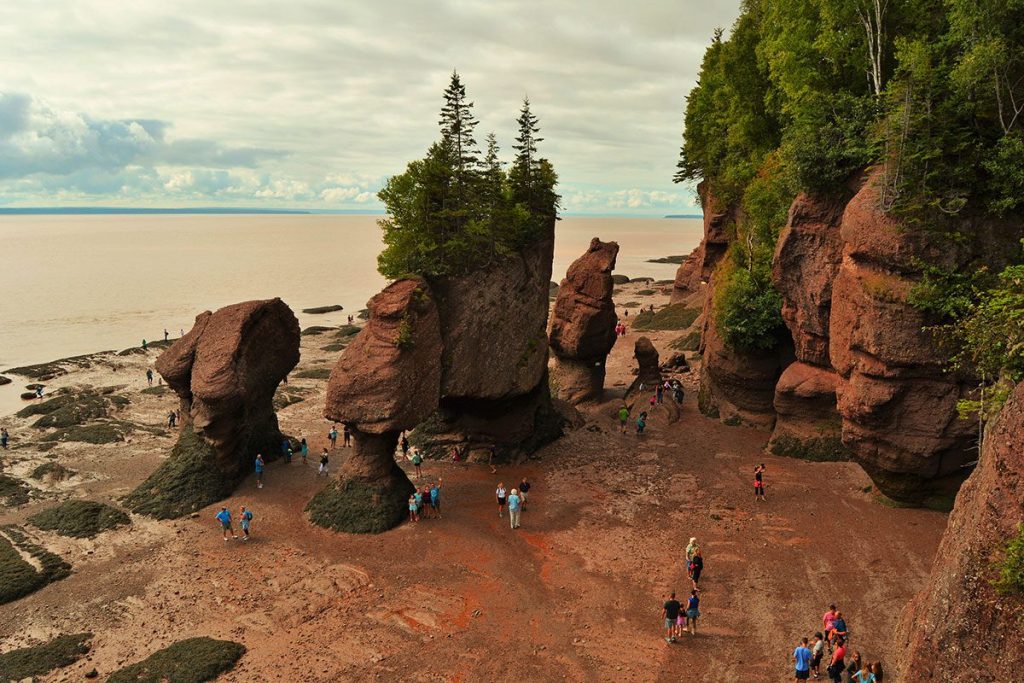
The Hopewell Rocks in New Brunswick, Canada. Image source: Vintagepix/Shutterstock.com
Located on eastern Canada’s Atlantic coast, the Bay of Fundy is well-known for its extreme tides. Due to its irregular form (52 feet), high tide and low tide may be as much as 16 meters apart in this bay. The Hopewell Rocks are a group of sandstone pillars with treetops that provide for excellent tidewatching. At high tide, the water covers the base of the rock formations, but at low tide, they are exposed.
6. Athabasca Falls
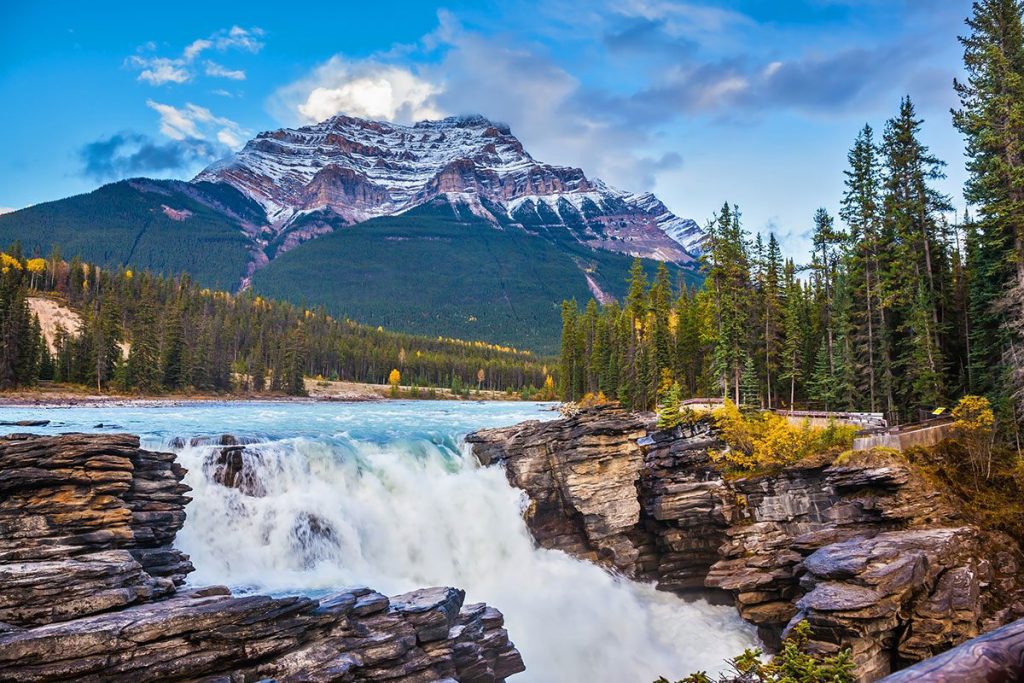
The majestic Athabasca waterfall in Jasper National Park, Canada. Image source: kavram/Shutterstock.com
Alberta’s Jasper National Park is the biggest of Canada’s Rocky Mountain parks, with its wide valleys, steep mountains, glaciers, forests, alpine meadows, and untamed rivers. Athabasca Falls is one of the most visited natural wonders in the area, and for good reason.
Water pours over the falls in great volumes even when the upper Athabasca River is at a low level. Around the falls, there are a number of pathways and lookout points where visitors may safely take photographs of the beautiful scenery. To get to Jasper from the other side of the falls, drivers need to use Highway 93A.
5. Churchill
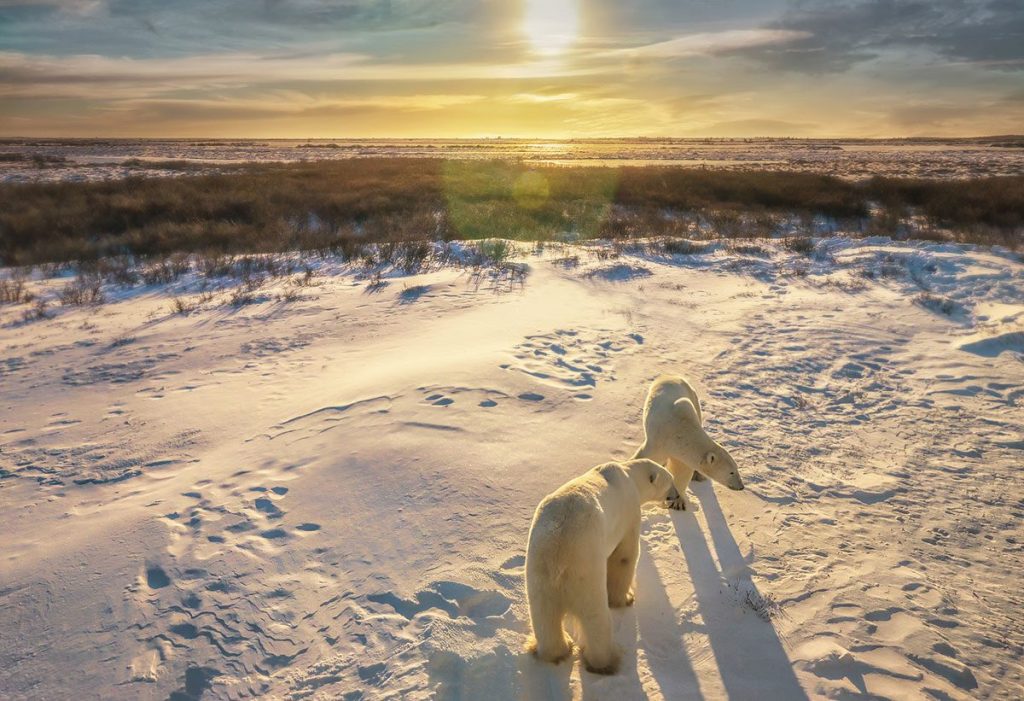
A polar bear standing on the snowy ground in Churchill, Canada. Image source: CherylRamalho/Shutterstock.com
Churchill is a small town in Manitoba on the coast of Hudson Bay, but every year it attracts a large number of visitors who come to witness the area’s most well-known residents: polar bears. Known as the “Polar Bear Capital of the World,” it is a popular destination for tourists around the country. Churchill is a famous destination for seeing polar bears, beluga whales, birds, and the aurora borealis, among other things.
4. Niagara Falls
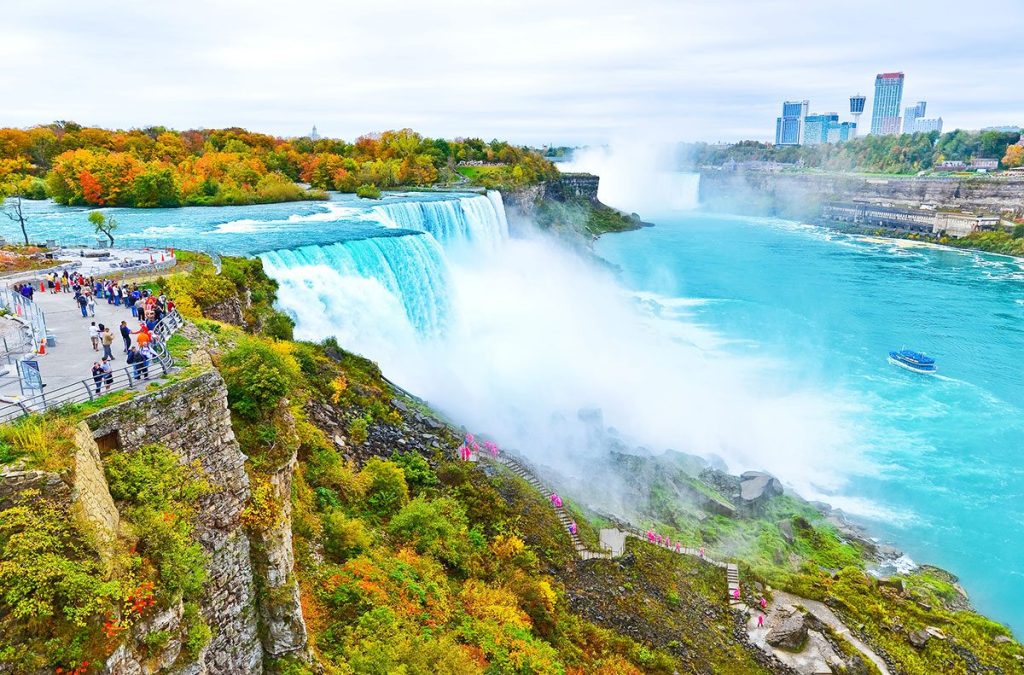
A stunning view of Niagara Falls in autumn in Canada. Image source: Javen/Shutterstock.com
The three waterfalls that make up Niagara Falls may be seen on the boundary between the United States and Canada, although many Americans mistakenly believe that Niagara Falls is only a single waterfall in New York.
The larger Horseshoe Falls is mostly located in Canada, while the lesser American and Bridal Veil Falls are situated almost entirely inside the United States. The combined flow rate of the three waterfalls is greater than that of any other waterfall in the world. Approximately 20 million people come each year, with the oldest attraction being a boat trip on the Maid of the Mist.
3. The Canadian

: A view of the Sky Train Railway in Vancouver, Canada. Image source: Pashu Ta Studio/Shutterstock.com
Crossing Canada by rail, namely the Canadian, may be a soothing experience for tourists. One of the most well-known rail journeys in the world connects the vibrant metropolises of Toronto and Vancouver through the picturesque landscapes of the Canadian Rockies, including the breathtaking Jasper National Park. The distance between the two cities is 4,466 kilometers (2,775 miles), which may be traveled in around three days. For the last several years, $22 million has been spent by Via Rail on updating the train.
2. Vieux-Quebec
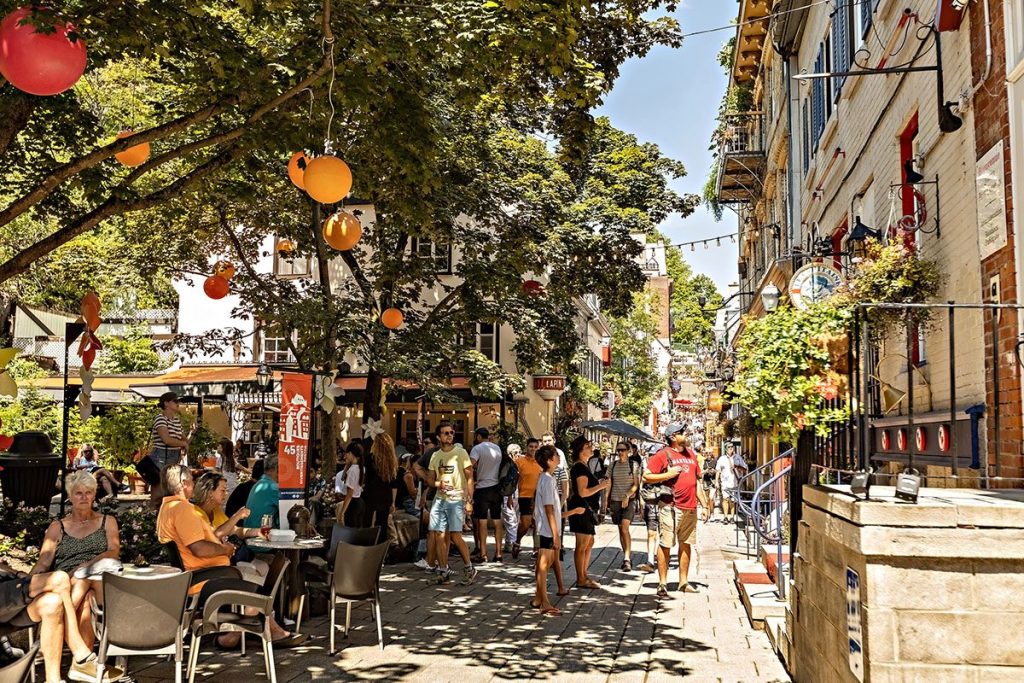
A charming street in the old town of Quebec City, Canada. Image source: Sun_Shine/Shutterstock.com
In Quebec City, the historic quarter known as Vieux-Québec (or Old Quebec) is a must-see. The French adventurer Samuel de Champlain established Saint Louis Fort here in 1608. Both the French and the British maintained a significant military presence and fortified the region. These days, it’s a popular tourist destination with several photogenic landmarks and quaint shops.
The Citadel, nicknamed “Gibraltar of the Americas,” is a must-see for tourists because of its commanding vantage point over the St. Lawrence River. Travelers should also see the historic Chateau Frontenac and stroll the quaint boutiques along Rue Saint Jean for a taste of European flair.
1. Moraine Lake
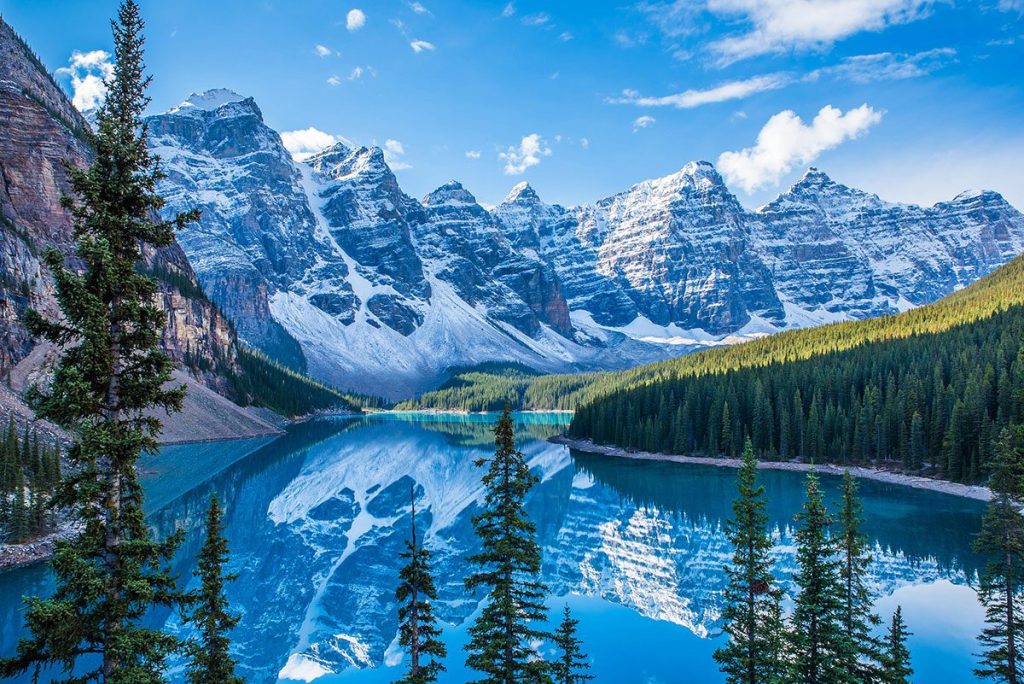
A panoramic view of the turquoise waters of Moraine Lake in the Rocky Mountains, Canada. Image source: Hue Chee Kong/Shutterstock.com
One of the most photographed locations in all of western Canada is Moraine Lake in Banff National Park. Located in Alberta, this glacier-fed lake is a stunning blue-green in color and is framed by towering mountains. It stands at an altitude of 1,885 meters in the Valley of the Ten Peaks (6,183 feet). Travelers love to take pictures near the end of the Rockpile Trail.
Once featured on Canada’s $20 note, this mountain lake is now known as Twenty Dollar View. Visitors may obtain a fresh perspective of the lake by kayaking on it, and other hiking paths give breathtaking views of the water as well.


